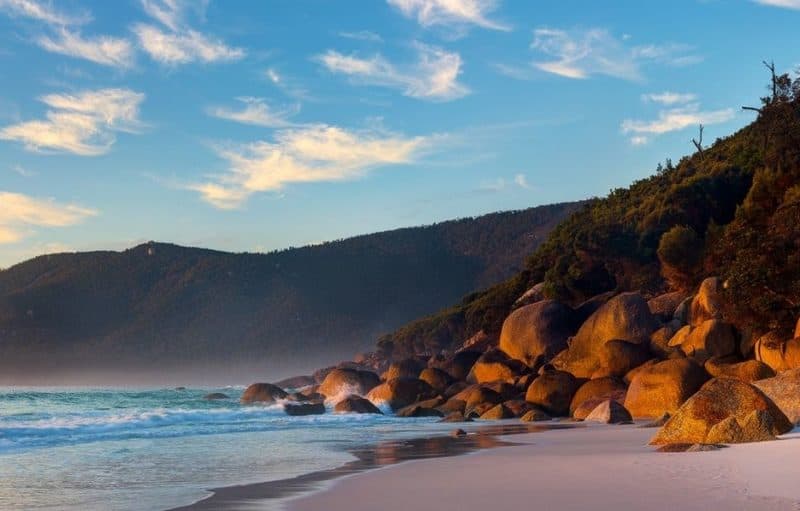MEDIA RELEASE 12 November 2020 |
Starting this Saturday, hundreds of divers and snorkelers will take to the water as part of this summer’s 16th annual month long Great Victorian Fish Count, the largest marine citizen science event in Victoria.
As Victoria becomes one again and people can freely travel (in a COVID-safe way) to the sea, marine enthusiasts across the state will be donning their wetsuits and hitting the water at their favourite local dive or snorkel site to collect information on the distribution and relative abundance of some of Victoria’s unique marine life.
“For many the Great Victorian Fish Count signals that it is time to blow the cobwebs out of their snorkel and get back underwater. What we have all been through this year has amplified our desire to step away from screens and immerse ourselves in and celebrate our natural environment and its inhabitants with like-minded folk”. Says Nicole Mertens, Conservation Project Officer at the VNPA and part of the team that coordinates the Fish Count.
Community groups, dive clubs and tour operators have been taking part in the Great Victorian Fish Count for 16 years. The Great Victorian Fish Count is organised by the Victorian National Parks Association (VNPA) in partnership with participating groups and supported by Parks Victoria, Coastcare Victoria, and Museums Victoria along with Redmap Australia.
This year the event will run from Saturday 14 November until Sunday 13 December at sites across the Victorian coastline. There will also be some opportunities to engage in “virtual” counts for those unable to access the water, or just looking to try something different.
“Last year, two schools in Bendigo took part in virtual Fish Counts using the Nature Conservancy’s underwater Reef Cam at Popes Eye, which was a great way to bring that fascinating rocky reef system to people who don’t have the coast at their doorstep. We think this year it’s certainly the right conditions to try and expand on that model.” Nicole says.
This year the theme of the Fish Count is “Exploring our home turf”. 2020 has been a year where for better or worse, the people of Victoria have had to become a lot more familiar with their local patch. The VNPA is encouraging people to embrace their local connections and points to the great work of dive clubs and community groups who “adopt” local sites to care for and monitor throughout the year, not just during the Fish Count.
“If there’s ever a time to love your local, it’s this year.” Nicole says. “Whether it’s a reef, pier or patch of seagrass, the Fish Count is a fun way to make that local connection and learn more about the amazing marine life in your blue backyard.”
Parks Victoria will coordinate snorkel surveys in a number of Victoria’s marine national parks and sanctuaries including the Barwon Bluff Marine Sanctuary near Barwon Heads, and at Jawbone and Point Cooke Marine Sanctuaries in Port Phillip Bay.
“While COVID restrictions this year will unfortunately limit the numbers of participants involved, our “Healthy Parks – Healthy People” philosophy encourages community participation in Victoria’s special places, and the Great Victorian Fish Count continues to provide a great opportunity to help us document the fish species that occur in marine protected areas, whilst having fun and meet like-minded people”, says Parks Victoria State-wide – Leader Marine and Coasts Mark Rodrigue.
Last year the most sighted fish was the Blue Throat Wrasse, recorded in 84% of all surveys, a result reflected in the previous four years of data. But the strikingly stripey Zebra Fish featured in 72% of surveys, a significant increase on previous years. It will be interesting to see if they are encountered at similar rates in 2020.
“These activities are so important for marine conservation in our incredible state waters. Our Fish Counters know that they must continue to protect their communities as we return to face-to-face outdoor activities, and so the 2020 Fish Count may look a little different than other years for groups to comply with the Covid-19 restrictions in place in their region. If you are interested in joining a local count, please contact the host group to discuss whether participation is possible, and what to expect on the day.” Nicole says.
Registrations of interest for the Great Victorian Fish Count are currently open to dive clubs, tour operators and community groups to run an activity along the Victorian coastline. For further information, and to see the full results of previous years, visit www.vnpa.org.au/fish-count.
Survey sites already confirmed include Barwon Bluff Marine Sanctuary, Ricketts Point Marine Sanctuary, Rye Pier, Frankston, Port Phillip Heads Marine National Park, Cape Paterson, Harmers Haven, Lakes Entrance, Beware Reef, and the Pinnacles (Phillip Island).
